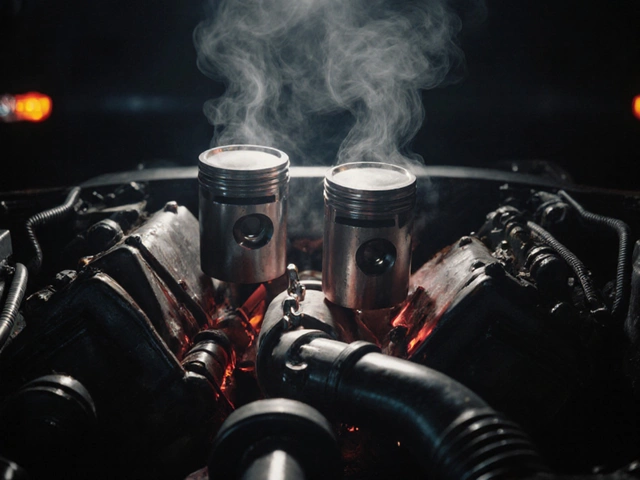Radiator Sealant: Quick Fix or Long‑Term Solution?
If you’ve seen steam or a puddle under your car, the first thought is usually a radiator leak. Before you rush to the garage, a radiator sealant might save you a tow and a pricey repair. It’s cheap, easy to use, and can stop small leaks fast. But it’s not a magic bullet for every problem. In this guide we’ll break down what sealant actually does, when it’s a good idea, and how to pick the right product for your car.
How Radiator Sealant Works
Radiator sealants are liquid or powder compounds that you add to the cooling system. Once the engine warms up, the sealant circulates with the coolant and finds the leak. Tiny particles in the mix cling to the hole and harden, forming a plug that stops coolant from escaping. Most formulas work on leaks that are a few millimetres or smaller – think a pin‑hole in a radiator or a cracked hose.
The sealant also coats the inside of the radiator, helping to prevent corrosion. That’s why many mechanics recommend an annual flush with a sealant‑based coolant – it keeps the system clean while giving you a backup seal in case a small crack shows up later.
Choosing and Using the Right Sealant
Not all sealants are created equal. Some are designed for aluminium radiators, others for copper or plastic tanks. Check the product label for compatibility with your engine type. If you have a high‑performance car that runs at extreme temperatures, pick a high‑temperature formula that can handle >200°C.
Here’s a quick step‑by‑step on how to apply it:
- Cool the engine completely. Hot coolant can burn you.
- Locate the coolant reservoir and check the level – you’ll need room to add the sealant.
- Shake the sealant bottle well. Most come in a measured dose (usually one bottle per 5‑litre system).
- Pour the sealant into the reservoir, then top up with fresh coolant if needed.
- Start the engine and let it idle for 10‑15 minutes. The pump will circulate the mixture throughout the system.
- Turn the heater on full blast. This forces the coolant through the heater core, ensuring the sealant reaches all parts of the system.
- After the engine runs, check for any new puddles or steam. If the leak stops, you’ve bought yourself some time.
Remember, sealant is a stop‑gap, not a permanent fix for major damage. If the radiator has a big crack, a bulge, or the coolant level keeps dropping fast, head to a mechanic. A professional can weld or replace the radiator, which will last far longer than any sealant.
Popular choices that consistently get good reviews include Bar's Leaks Radiator Sealant, Kobalt Radiator Stop Leak, and Permatex Radiator Sealer. They all claim to seal gaps up to 2 mm and work at temperatures up to 210°C. Read the packaging – some need a minimum operating time of 30 minutes before you can be sure the seal is set.
Finally, keep an eye on the coolant colour and smell. If it turns rusty or smells sweet, you might have a new issue that the sealant can’t fix. Regular maintenance – flushing the system every 2‑3 years and checking hoses for wear – will reduce the chances you need a sealant in the first place.
Bottom line: radiator sealant is a handy tool for small, sudden leaks and for keeping corrosion at bay. Use it correctly, choose a product that matches your car’s materials, and treat it as a temporary measure while you plan a proper repair. That way you stay safe, avoid overheating, and keep your wallet a little fuller.
 12 June 2025
12 June 2025
Best Repair for a Cracked Radiator: What Actually Works?
A cracked radiator can ruin your day—leaving you stranded or watching your temperature gauge rocket up. This article digs into which repair methods actually hold up, from quick fixes to long-term solutions. We'll cover signs you shouldn't ignore, explain repair options in plain English, and throw in tips that could save you hundreds. You'll even get a sense of when it's time to throw in the towel and replace the whole thing. Stop wasting time and money—get straight answers here.






0